Egyptian Pantheon
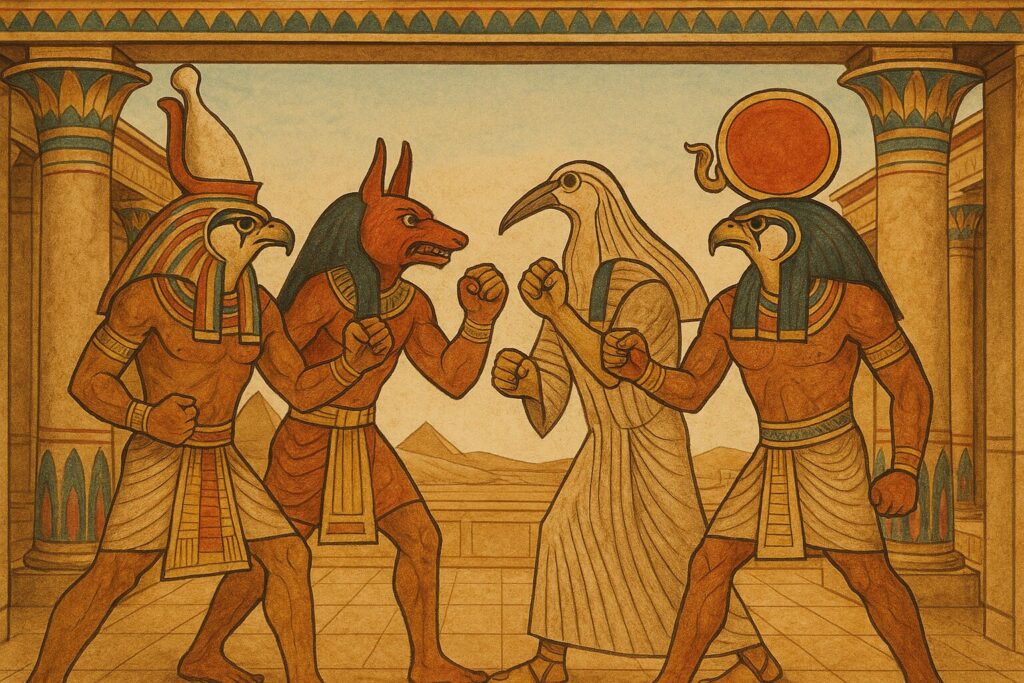
The Gods Of Egypt
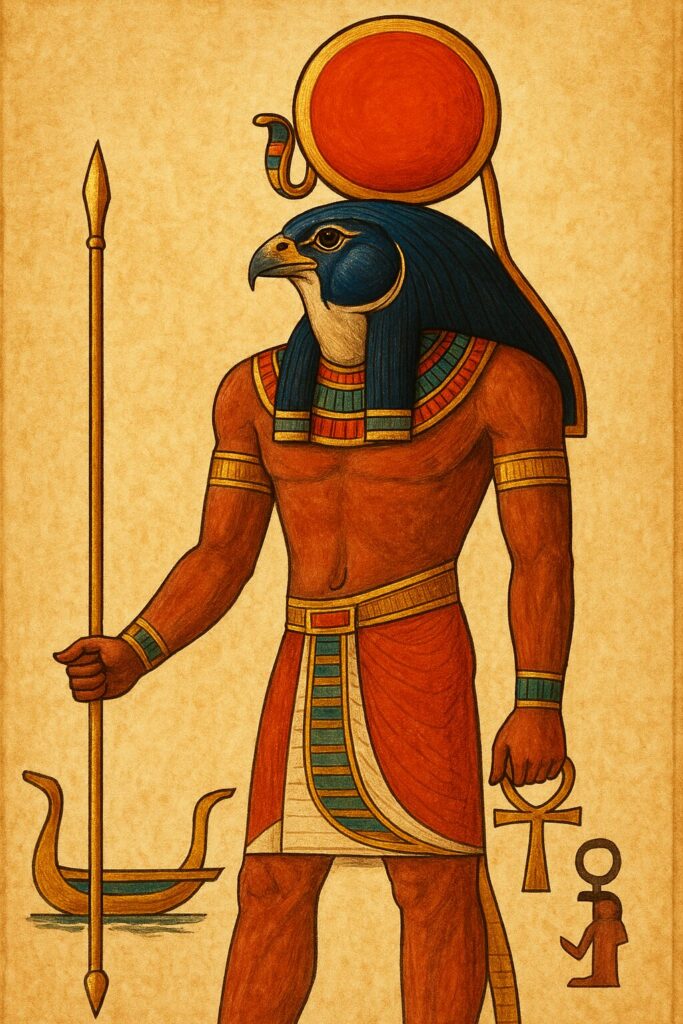
Ra
The Sun God and Creator is the supreme god of creation and life. He travels across the sky during the day in his solar boat, bringing light to the world, and at night, he journeys through the underworld (Duat) to battle the serpent Apep, the embodiment of chaos. Ra is one of the most important deities in Egyptian mythology and is often merged with other gods, such as Amun (Amun-Ra).
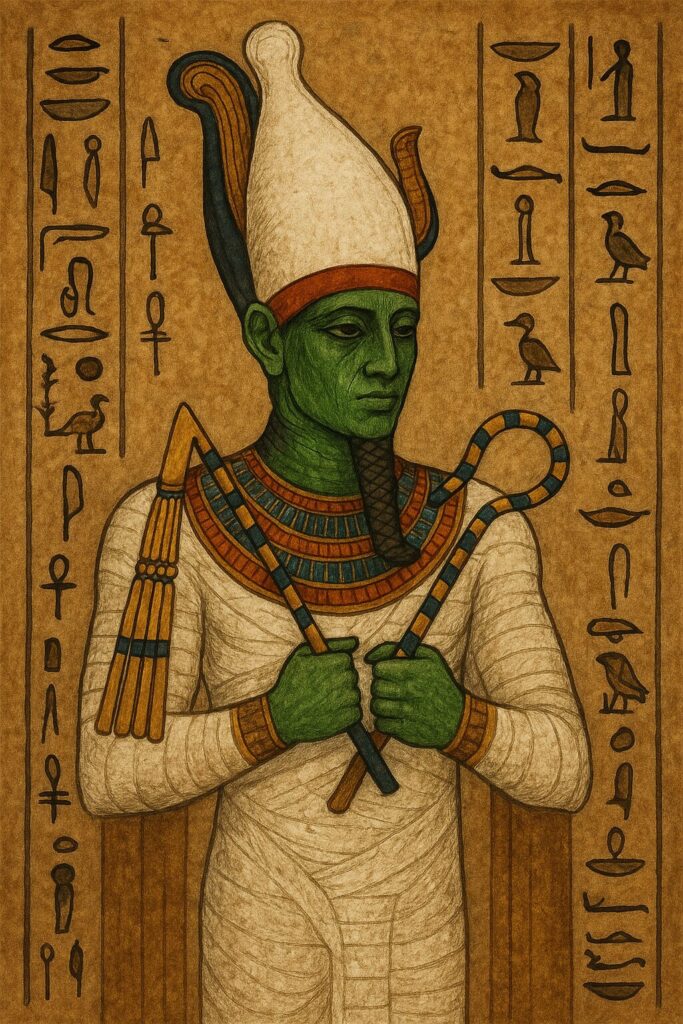
Osiris
The God of the Afterlife and Resurrection, once the ruler of Egypt, but was murdered by his jealous brother, Seth, who dismembered his body. His wife, Isis, reassembled and resurrected him, allowing him to become the ruler of the Duat (underworld). Osiris is depicted as a mummified pharaoh with green skin, symbolizing rebirth and vegetation. He judges the dead in the afterlife, weighing their hearts against the feather of Maat.
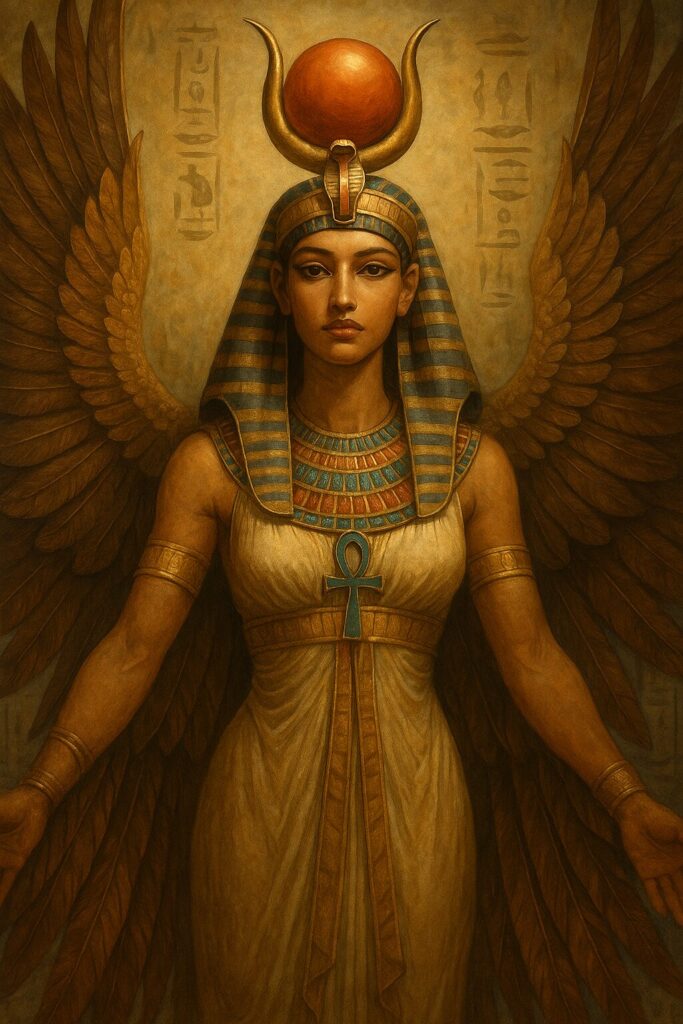
Isis
The Goddess of Magic and Motherhood, is one of the most powerful and beloved goddesses in Egyptian mythology. Also, she is the goddess of magic wisdom and fertility. She resurrected her husband Osiris and conceived their son, Horus, who later avenged his father. Isis is also known for her protective and healing powers. She is often depicted as a woman with a throne-shaped crown or with outstretched wings.

Horus
The God of Kingship and the Sky, is the falcon-headed god of the sky, kingship, and war. He is the son of Osiris and Isis and is known for avenging his father’s death by defeating Seth. The ruling pharaoh of Egypt was considered the living incarnation of Horus. He is often depicted as a falcon-headed man wearing a double crown, symbolizing his rule over Upper and Lower Egypt.
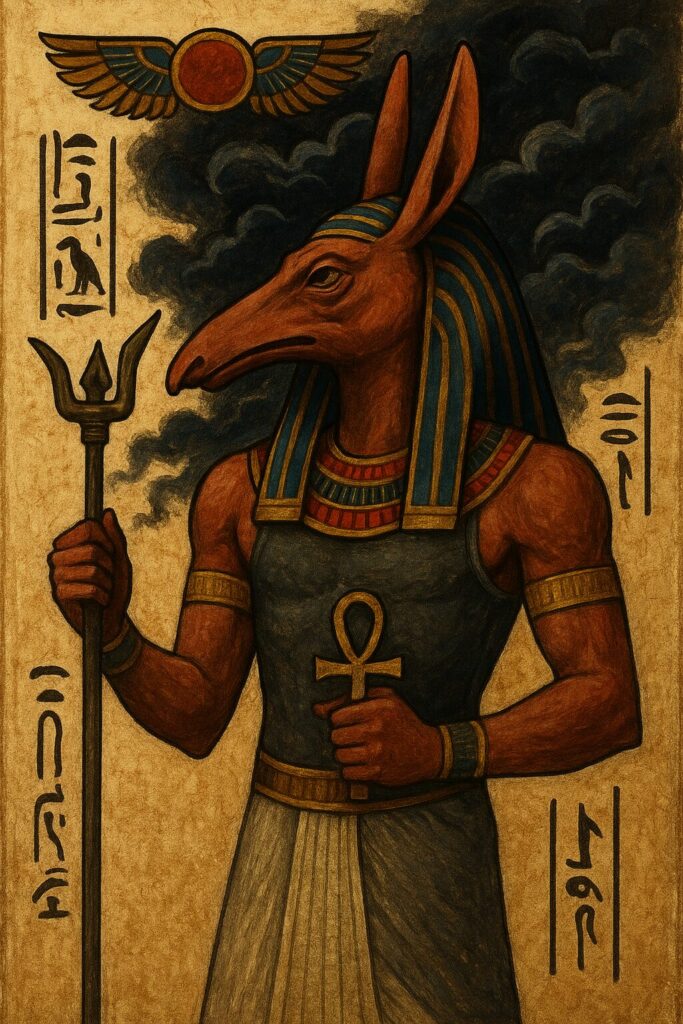
Seth
The God of Chaos and Storms, commanding desert and violence. He is the brother of Osiris and is infamous for murdering him in a bid for power. Though often portrayed as an antagonist, Seth was also a protector of Ra in his nightly battle against the chaos serpent Apep. He is depicted as a man with a mysterious, animal-like head, often called the Set animal.

Anubis
The God of Mummification and the Dead, is the jackal-headed god of the afterlife. Before Osiris took over as ruler of the underworld, Anubis was responsible for guiding souls and overseeing mummification rituals. He is the one who weighs the hearts of the dead against the feather of Maat to determine their fate. He is often depicted as a black jackal or a man with a jackal’s head.
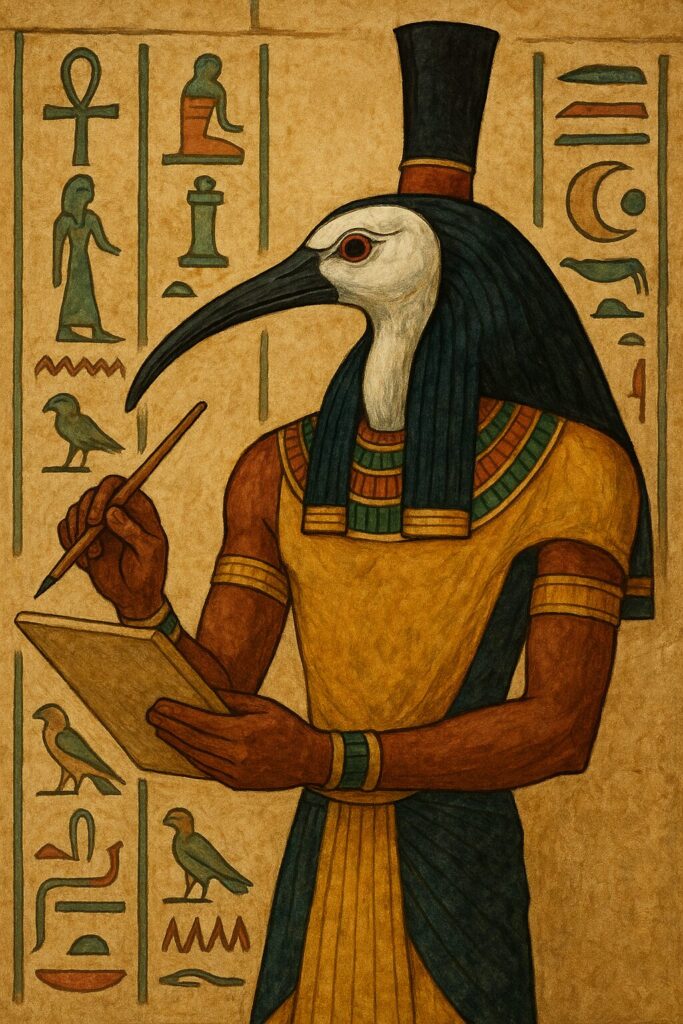
Thoth
The God of Wisdom, Writing and the Moon, is the ibis-headed god. He is said to have invented writing and hieroglyphs and serves as a scribe and mediator among the gods. He is also responsible for recording the results of the Weighing of the Heart in the afterlife. Thoth is often depicted as a man holding a writing tablet.

Maat
The Goddess of Truth, Justice, and Harmony balances the cosmos. She represents the order of the universe, opposing chaos. The hearts of the dead are weighed against her feather in the underworld to determine if they are worthy of the afterlife. She is often depicted as a woman with an ostrich feather on her head.

Bastet
The Goddess of Protection, Home, and Cats, is the lioness-turned-cat goddess of fertility and music. She started as a fierce warrior goddess (depicted as a lioness) but later became associated with domestic cats, protecting homes from evil spirits and disease. She is often depicted as a cat-headed woman holding a sistrum (a musical instrument).
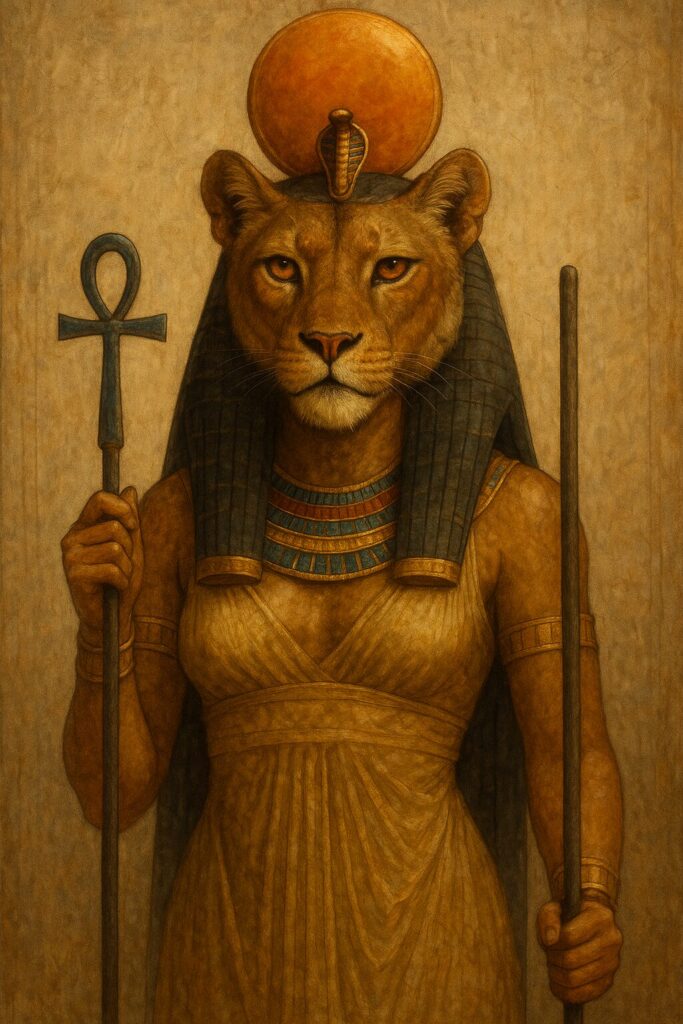
Sekhmet
The Goddess of War and Healing, is the lion-headed goddess of war, destruction, and plague, as well as healing and protection. She was created by Ra’s wrath to punish humanity but later became associated with healing when pacified. She is often depicted as a lioness-headed woman wearing a sun disk.
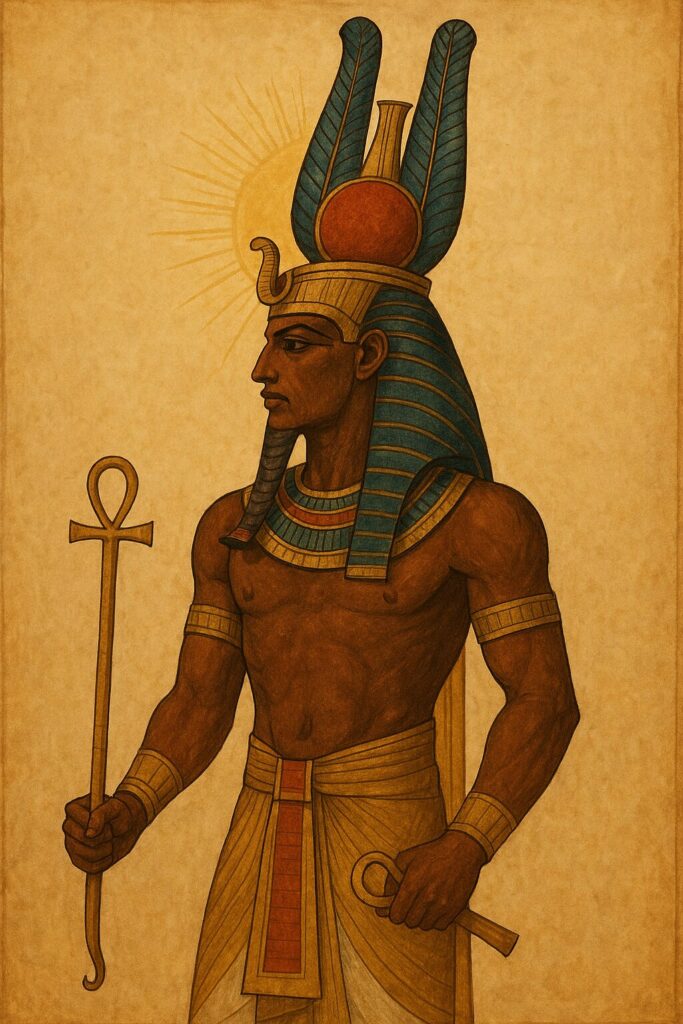
Amun-Ra
The Hidden One and King of the Gods, Amun was originally a local god of Thebes but later became Amun-Ra, merging with Ra to become the supreme deity of the Egyptian pantheon. He is the god of creation, the hidden force, and kingship. He is often depicted as a man wearing a double-plumed crown, sometimes with a ram’s head.
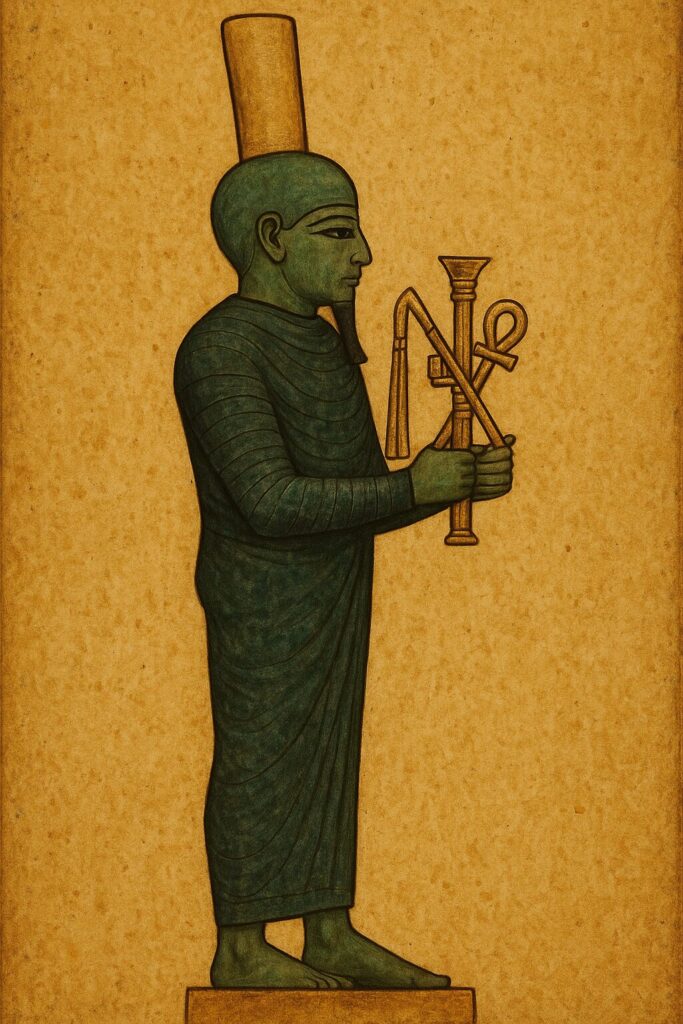
Ptah
The God of Creation and Craftsmen, and Architecture. He is believed to have created the world by speaking it into existence. He is also the patron of artisans and builders. Ptah is often depicted as a mummified man holding a scepter.

Hathor
The Goddess of Love, Joy, and Music, governs over beauty, dance and motherhood. She is associated with fertility and celebration, and she welcomed souls into the afterlife. She is often depicted as a cow-headed woman or a woman with cow horns and a sun disk.
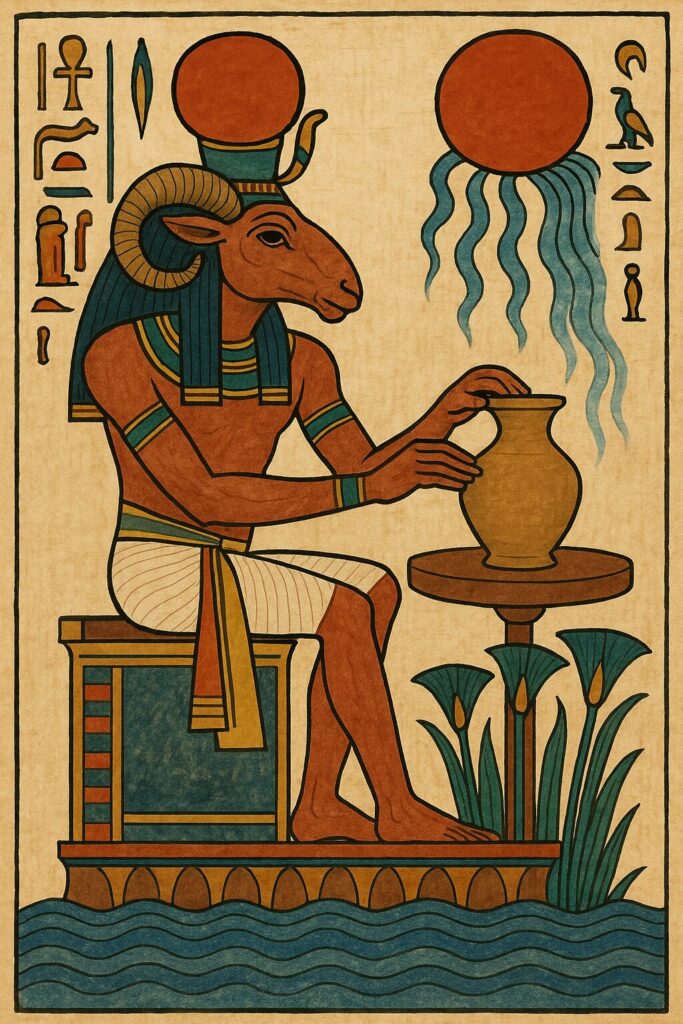
Khnum
The God of Creation and the Nile, is the ram-headed god of creation and fertility. He is believed to have shaped humans out of clay on his potter’s wheel. He is also linked to the flooding of the Nile, which provided fertility to the land.
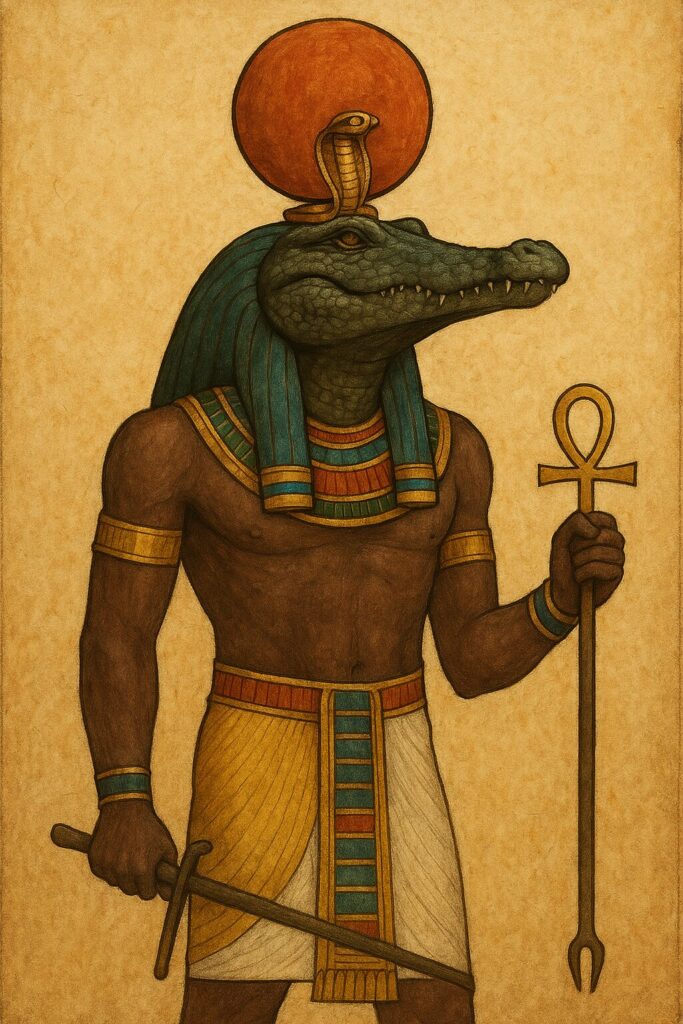
Sobek
The God of the Nile and Crocodiles, is the crocodile-headed god of the Nile, fertility, and military strength. He was both feared and worshipped, as he controlled the waters and was a symbol of pharaonic power. He is often depicted as a man with a crocodile head, wearing a sun disk and a uraeus (cobra symbol).
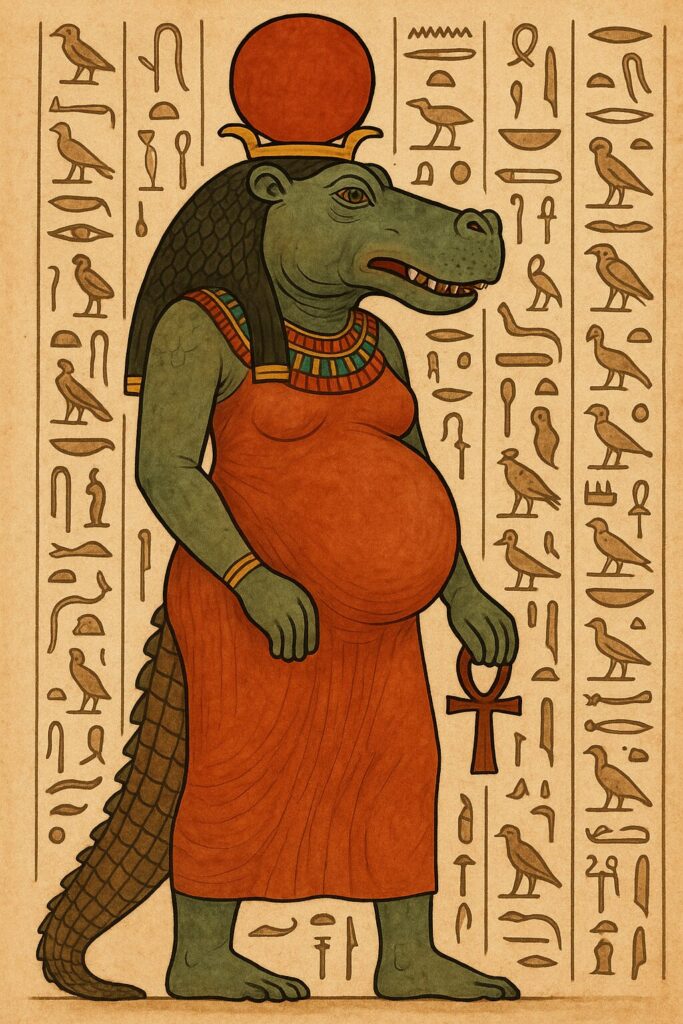
Taweret
The Goddess of Pregnancy, Childbirth and Protection, is the hippopotamus-headed goddess who was a beloved household deity, protecting women and children from harm. She is often depicted as a pregnant hippopotamus with the tail of a crocodile.
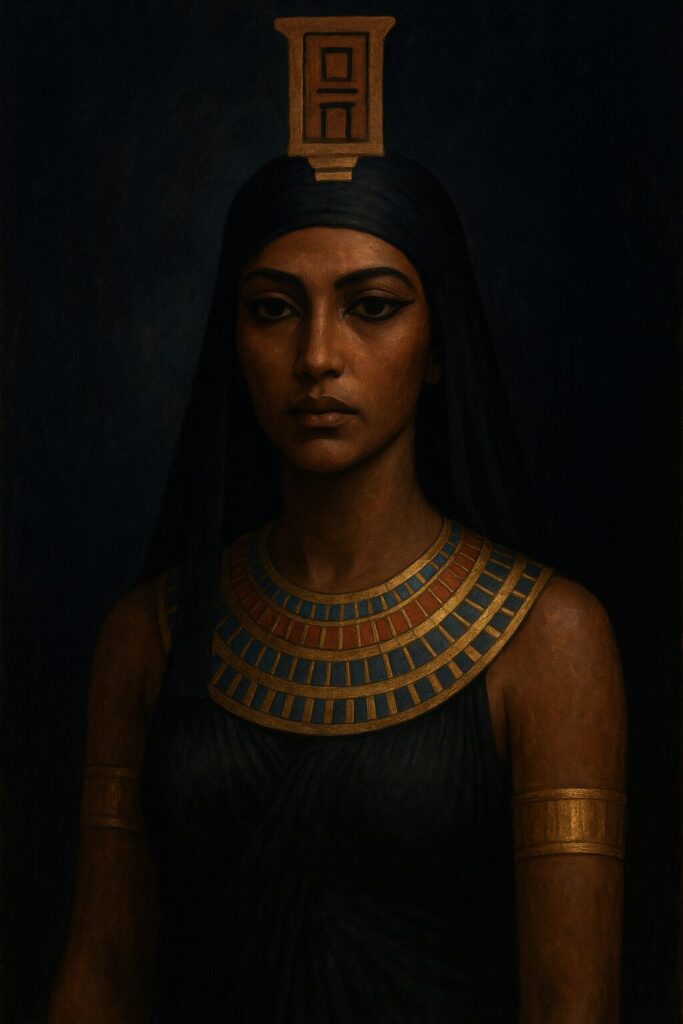
Nephthys
The Goddess of Mourning, Night, and Funerary rites. She is the sister of Isis and Osiris, and she helped Isis resurrect Osiris. She is associated with death and protection in the afterlife. She is often depicted as a woman with hieroglyphs representing her name on her head.